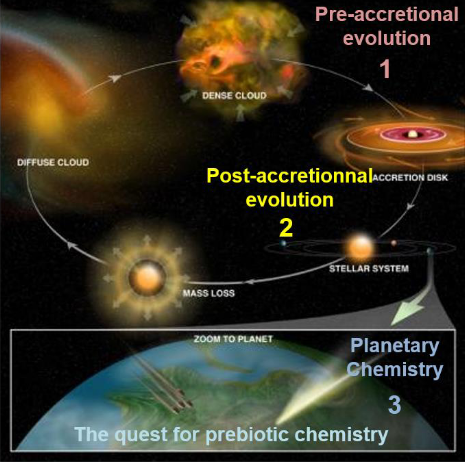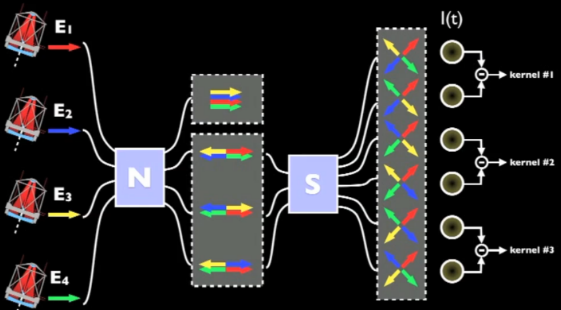3 postes de doctorat en formation planétaire à l’Université d’Amsterdam
Trois postes de doctorant à pourvoir à l’Université d’Amsterdam, pour travailler dans le cadre du projet ERC « Ground Truth for Pebbles »
There is three PhD positions to fill at the University of Amsterdam, to work in the ERC project “Ground Truth for Pebbles”, GT4Pebbles, https://gt4pebbles.eu.
Creating a Solid Foundation for Planet Formation: What is the Origin of Pebbles? – 3 Positions in an ERC Project
Advisor: Carsten Dominik (dominik@uva.nl)
Pebbles are the critical ingredient of all current planet formation models. Pebbles are large, compacted dust aggregates that are supposed to form early on in protoplanetary disks, and huge amounts of them with very specific properties are needed. All current models simply assume they exist with maximum abundance. Do they really exist? How are they made? Do they have the properties needed to actually jump-start and accelerate planet formation?
The ERC project GT4Pebbles (Ground Truth for Pebbles) will answer these questions with a program of rigorous dust aggregation modeling, based on the results of a new and revolutionary experiment. We are building the experiment with our partner Prof. Jürgen Blum at the Technische Universität Braunschweig (Germany), the leading laboratory for this type os studies. This job advertisement is for three PhD positions at the University of Amsterdam, to do the advanced modeling. Each PhD student will work in close collaboration with the other students in the group, and with the laboratory group in Braunschweig, from where we will get the input of physical properties needed in the modeling. Become part of an exciting, interdisciplinary, international team (https://gt4pebbles.eu) that is tackling one of the most important questions in planet formation.
If you would like to work on GT4Pebbles, please indicate this in your cover letter, including an intended starting date.
PhD Position 1: A collisional model for dust aggregates, based on continuum mechanics.
We will use laboratory observations of colliding dust aggregates and measurements of mechanical properties of dust as it is produced by our experiments to build a model that describes how dust grows and gets compressed in collisions. Since these aggregates are very large, maybe 10^15 individual particles, we will develop a continuum-mechanics model to describe and treat the collisions, in close interaction with laboratory experiments. This will give you unique training on numerical mechanics, astrophysics, and a deep understanding of laboratory studies. You should be available to start in September 2026 at the latest.
PhD Position 2: Dust Aggregation with full treatment of Porosity, Mass, and Compaction.
We will build and apply the world’s first dust growth model with full treatment of aggregate mass and porosity, to follow the growth of aggregates and their eventual transformation into pebbles. This enormously challenging task is possible—we do have a proof-of-concept implementation that we can build on. You will be working closely with the PhD student from Project 1 and with the laboratory group to test and confirm your results. You will get strong training in high-performance computing, likely including graphics card computing, astronomical applications, and in the understanding and use of laboratory experiments. The student should start in September 2026 at the latest.
PhD Position 3: Interaction of Light with Large Porous Dust Aggregates and the Link to Observations.
We will develop a new approach to model how very large, fluffy dust aggregates interact with light, in order to develop observational diagnostics for the fluffy, intermediate stage of dust on its growth and transformation into pebbles. Currently, there are no reliable ways to compute the absorption and scattering of light by such particles. You will get strong training in optical properties of dust and dust analogues. You will interact closely with the experimental group that produces extremely realistic aggregates and directly measures their interaction with light. In our network, we have some of the best planet-forming disk observers in the world, and we will apply your research to the latest data. The PhD student should start at the latest in September 2026, but preferably already in March. If you are interested in this position and can start early, please contact the advisor directly in addition to submitting your application.
Informations :
Information about the hiring process: https://api.uva.nl/vacancies/phd-recruitment-process/phd-recruitment-process.html
Information about API: https://api.uva.nl/vacancies/doing-a-phd-at-api/doing-a-phd-at-api.html
Where to apply:https://api.uva.nl/vacancies/vacancies-api.html
Plus d'actualités Postes à pourvoir



